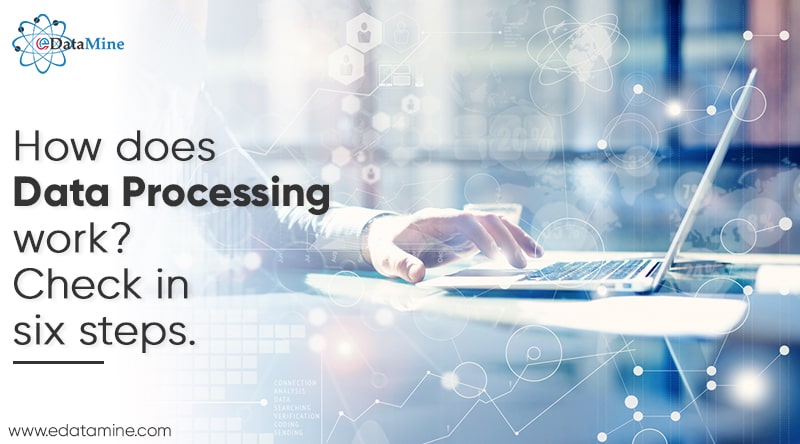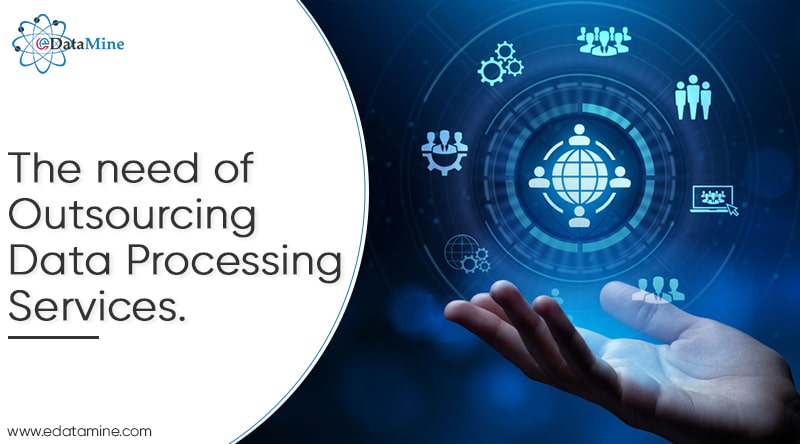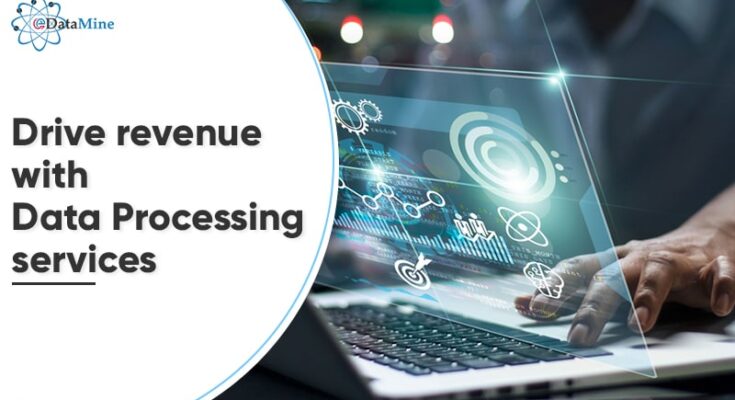“Data is a precious thing and will survive longer than the systems themselves.”– Tim Berners-Lee, the founder of the World Wide Web.
We quite agree. After all, data is the future that keeps us moving forward. In factit is predicted that, by 2025, the global data creation will grow to be more than 180 zettabytes.
Apparently, every day, a person generates 2.5 quintillion bytes of data. Only 10 or maybe 20% of that gets interpreted by the machine while a majority of the data remains unstructured and unused. The data contains valuable insights that, if rightly utilized, can inspire innovation and improve strategic decision-making.
That’s when the role of data processing begins. Data processing services gathers, filters, sorts, processes, analyses, sorts & presents the data in a required yet easy-to-understand format.
What Is Data Processing?
Transforming raw data into more comprehensible & useful information is what data processing is all about. Relevant information gets extracted from raw data to gain valuable insights. Being an important activity in any organization, the process facilitates improved productivity, simplified & secure business processes, cost reduction, & easy data access.
Types of Data Processing Services
Data processing services are conducted through various procedures. Depending on your industry requirements, you can choose the one that benefits you the most. Read below as we explain each one to help you decide which one or ones are most suited to your respective necessities.
Batch Processing
In this technique, the data processing happens over a particular set of data, stored over a long time. A huge portion of data gets processed as a single unit. Payroll & billing systems, credit card transactions, and monthly/yearly reports are examples of batch processing. This approach extracts documented data out of massive raw data volume.
Real-Time Processing
Real-time data processing means processing constantly the incoming flow of data. This is a process where ongoing data input is required to provide a steady output. Examples of real-time data processing include aviation management (tracking real-time position of aircraft), eCommerce platforms, weather forecast management, traffic control authorities, medical wearable devices, online bookings, CCTV surveillance systems, ATMs, and many more. Real-time data processing facilitates quick & efficient decision-making.
Online Processing
This approach lets the businesses upload their raw data online to obtain processed outcomes. Besides being fast and easy, online processing lets the user enter/upload the data through an interface like a web browser or a phone. Here are the two examples of online processing-
- Storage room staff can scan the barcodes of all the merchandise, thus recording the activity of the products from warehouse to shipping to the store. A person responsible for inventory can easily check the current location of the products.
- When a consumer purchases something from the store, the barcode gets scanned for cost and the invoice. The product instantly gets marked as sold in the inventory system. As soon as the payments are processed, the costs and sales reports also get revised.
Multiprocessing
Multiprocessing means a single computer system having more than one central processing unit. The data gets distributed among several processors so the various data parts get processed at the same time rather than in sequence. This approach enables data-intensive applications to perform quickly and efficiently. Examples of multiprocessing include accounting & financial services, scientific and engineering analyses.
Time-Sharing
Time-sharing facilitates the access of a single computer system to multiple users at the same time. In batch processing, one user can make changes at one time while time-sharing lets several users perform processing simultaneously with the central processing unit (CPU).
So, How Does Data Processing Work?

The process can be broken down into six steps:
Data Collection: Data is gathered from countless online/offline sources, databases, data lakes, and data warehouses. While accumulating the data, it is ensured that the information is accurate, dependable, and of high quality.
Data Preparation: The accumulated data goes through a cleansing process. Data repetitions are removed, errors are corrected, and any data gaps are filled with relevant information. The process is also known as pre-processing. It improves the quality & accuracy of the data which ultimately contributes to better business intelligence.
Data Input: The prepared data gets coded or converted from a human-readable format to a machine language. The data gets fed to a CRM software like Salesforce or Redshift, a data warehouse.
Data Processing: This is the stage where data turns into an insight. The process varies a lot depending on the data complexity, data type, source, and intended usage. The process can be performed manually or automatically. This approach facilitates quick & easy interpretation of data.
Data Output: The data that was in the form of machine language now turns into graphs, charts, images, videos, images, word files, or any other client-required format. The data has now become an insight that’s comprehensible, convenient, and readily available for everyone in the organization. Various teams can now utilize the data to address various business needs and fulfil the business goals.
Data Storage: Time to securely put the prepared data in the storage. The data can be placed in a Data Mart (A sub-set of a large data warehouse, that stores the data focussed on a single subject & specific users) or the data gets stored in a larger data repository such as a data lake, or a data warehouse.
How Does Data Processing Services Help Drive Business Revenue?
Improved Productivity &ROI
Processed data gets utilized for countless purposes. Quality data leads to better operations, informed decisions, increased productivity, and ultimately profitable decisions.
Better Judgments
Processed data lets you recognize the harmful or beneficial patterns which would be difficult to spot in raw data. Processed databases can be efficiently analysed and better conclusions can be drawn from the analysis.
Accurate Data You Can Depend On
With reliable and accurate data on hand, organizations can compare how the company’s products/services are sold compared to opponents’ merchandise/services.
Cost-Effectiveness
To analyze the data, you must first have accurate & organized data. If the data is full of errors then the poor analysis will cause more losses than profits. Analysis of the accurate data benefits you a lot in terms of costs, efforts and time.
Easy Data Documentation, Data Sharing, and Data Storage
When the data gets processed, it gets saved into an appropriate and latest digital format which makes the storage, sharing, and maintenance much easier. Plus the data is readily available for analysis whenever required.
Why Do You Need To Outsource Data Processing Services?

Businesses generate massive amounts of data each day. About 68% of all that data is never explored. We live in times that demand a lot of dependence on digitized information, and that’s why we need to process the raw data, quickly, correctly, and wisely.
Conducting data process sing in-house isn’t advisable as it is extremely costly in terms of team, technology, training, infrastructure and a lot other expenses. While outsourcing data processing services to a trustworthy data management outsourcing company would provide you an access to the experienced experts and latest technology.
You will get customized, cost-effective, and top quality processing solutions within a quick turnaround time. Regardless of the data complexity, or data volume, skilled experts will provide outcomes suitable to your business goals. Experts don’t simply cleanse and process the data. They conduct a range of systematic measures on the data as required to deliver a satisfactory outcome. During the process, your massive data volumes get reduced to only relevant and important information, saving your systems from crumbling under too much irrelevant information.
Data processing services are quite integral to any business in any industry. Along with keeping the business data in check, it notifies you about the business performance and finances. Plus, it even helps you predict the future of the business. To make the most of the data, it is better to get a professional help. Outsource today.
Author bio:

Kelly Anderson is the customer success manager for eDataMine, a renowned data management firm, recognized for providing the best quality customized solutions at affordable rates. Kelly provides valuable insights concerning data processing outsourcing to boost the business growth of a global clientele.
Guest Post Service By www.guestarticlehouse.com




